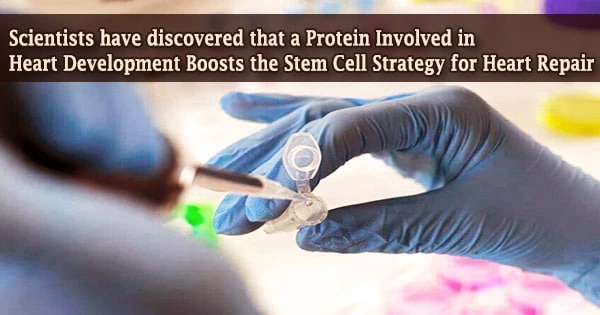The ability of the human heart to mend itself after an injury decreases with age. Damage caused by traumas such as cardiac ischemia and heart attack, which are linked to low oxygen levels in the heart, can cause the heart to perform at a lower capacity, making it difficult for patients to go about their daily lives.
One of the first and most important processes in vertebrate embryonic development is the creation of the heart. The morphogenic events that result in the four-chambered heart during normal mammalian circulatory development have been well understood for over a century.
Researchers have turned to stem cell-based therapies to help with heart repair following ischemia injury, which replace dead heart tissue with new, functional tissue. However, less than 1% of stem cells survive transplantation into the heart in the majority of cases, owing to the cells’ inability to cope with the metabolic demands of the ischemia environment.
The mechanisms of human cardiogenesis, in particular, are poorly understood, which is critical for understanding the origins of fetal heart disease, as well as the several forms of juvenile and adult heart disease that result from errors in later stages of circulatory development.
In this research, scientists from Temple University’s Lewis Katz School of Medicine reveal that this barrier can be overcome, at least in mice, by reintroducing LIN28, a protein normally produced in the embryonic heart, into stem cells obtained from adult heart tissue. Adult cardiac stem cells become more metabolically flexible as a result of LIN28, considerably increasing their chances of survival.
“LIN28 is very active in the developing heart, but not in the adult heart,” explained Mohsin Khan, Ph.D., Assistant Professor of Cardiovascular Sciences at the Cardiovascular Research Center at the Lewis Katz School of Medicine and senior investigator on the new study.
“We found that when we expressed LIN28 in cardiac stem cells from adult heart tissue, the adult cells were reprogrammed to have metabolic characteristics of young, developing heart cells. The process was essentially like reverse aging.”
The new findings were published online in the journal Redox Biology.
LIN28 is very active in the developing heart, but not in the adult heart. We found that when we expressed LIN28 in cardiac stem cells from adult heart tissue, the adult cells were reprogrammed to have metabolic characteristics of young, developing heart cells. The process was essentially like reverse aging.
Mohsin Khan
The fetal heart is designed to function in low-oxygen environments. However, this low-oxygen tolerance is lost after birth, and by adulthood, the heart is particularly sensitive to oxygen shortages.
Changes in cellular metabolism are to blame for this shift, and recent research suggests that metabolic abnormalities in the heart play a role in determining stem cell fate after transplantation.
Dr. Khan and colleagues wanted to see if metabolic regulators that are expressed in the growing heart may give cardiac tissue-derived stem-like cells (CTSCs) some metabolic flexibility in their latest study.
CTSCs are found in both neonatal and adult cardiac tissue, but only the developing heart expresses LIN28. CTSCs have regeneration potential in adult heart tissue but are usually dormant.
The researchers first tested the impact of reinstating LIN28 expression in adult mouse CTSCs in vitro on signaling pathways important in cellular metabolism, growth, and regeneration.
They discovered that LIN28 expression triggered a powerful regeneration response in CTSCs, allowing them to proliferate and survive in the face of oxidative damage. The changes were linked to the Let7/PDK1 signaling pathway, which is known to regulate aerobic metabolism in cells, according to the researchers.
Transplanting LIN28-expressing CTSCs into the hearts of mice who had experienced a heart attack improved cardiac shape and function significantly. These effects were mediated through the same pathways that were discovered in the in vitro tests.
“LIN28 modified energy production in CTSCs, leading to the secretion of many factors that are beneficial for heart cell survival,”
Dr. Khan explained. “Overall, the cells took on a more youthful phenotype.” Dr. Khan’s next step is to test the new findings in a larger animal model and see if LIN28 can re-program human-derived cardiac stem cells. “These studies could have important implications for how we approach stem cell therapy for heart disease in humans,” he said.












